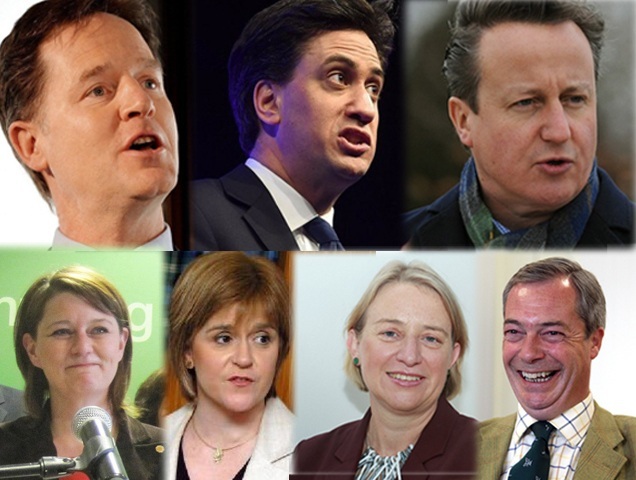The leaders were next asked how they would ensure long-term funding for the NHS while keeping it as a public service accessible to all.
Mr Farage said he believed in the NHS and that he had needed it more than most people, having been in “so many scrapes” in his life.
He added: “This whole question of how we can fund the NHS with a population that is rapidly rising, that is ageing, it’s a huge question.
“We have decided the best way to do it is to run it efficiently and run it as a public service … but to recognise there has been a 48% growth in middle management since 1998.”
He said he did not agree with privatisation and that Ukip would put in an extra £3 billion of funding from EU savings. He also pledged to end hospital parking charges.
Ms Sturgeon called the NHS the “most precious” public service the nation has.
She added: “In Scotland we have protected the budget of the NHS and we will always do so. We also believe passionately that the NHS should always be run as a public service, not for private profit.
“That’s why we oppose the privatisation that is happening in England. We oppose it in principle but also because it poses a risk in the long term to Scotland’s budget.
“The best thing we can do for the NHS is to end austerity … anybody that tells you that cutting the social care budget or the welfare budget is good for the NHS is wrong.”
Ms Bennett said there was a “race” towards setting up the structures for privatisation within the NHS, adding: “Profit motive should have no place in healthcare.”
She went on: “We are not happy with 5% of money that is supposed to be for healthcare going in profits, we want 0% going in profits.
“What we need to do is take the whole market mechanism out of the NHS.”
She also called for free prescriptions, free eye care and free dental.
Mr Clegg asked the leaders to put their money where their hearts are.
He added: “The NHS doesn’t need warm words. It needs hard cash … the Liberal Democrats have a plan about how to find that.”
Ms Wood said the NHS in Wales faced two threats – from continued austerity cuts and centralisation under Labour in Wales. She said she would fund it from general taxation.
She added: “Plaid Cymru wants to recruit and attract an additional thousand doctors into the NHS to bring us up to the same level as the rest of the UK. At the moment, we are way behind.”
Mr Miliband said he was “deeply concerned” about the crisis in the NHS and told viewers Labour would get money from a mansion tax, from hedge funds engaging in tax avoidance and from the tobacco companies.
He added: “It’s not just more staff. It is also joining up services from home to hospital.”
Mr Cameron said the NHS was the “most important national institution and national public service that we have”. He also told viewers he would not forget what he had received as the father of a disabled son in terms of “unbelievable” care and support.
He added: “I just want that for every family and everyone in our country.
“I want the money spent on patient care … it is key we keep a strong economy in order to fund a stronger NHS.”
